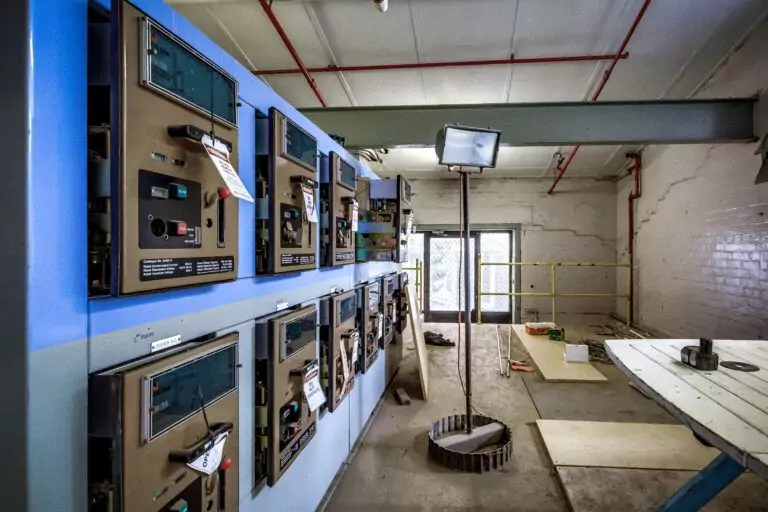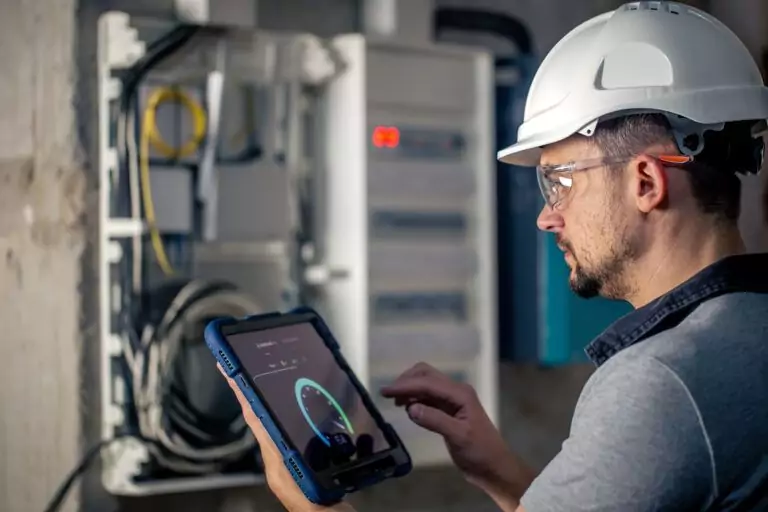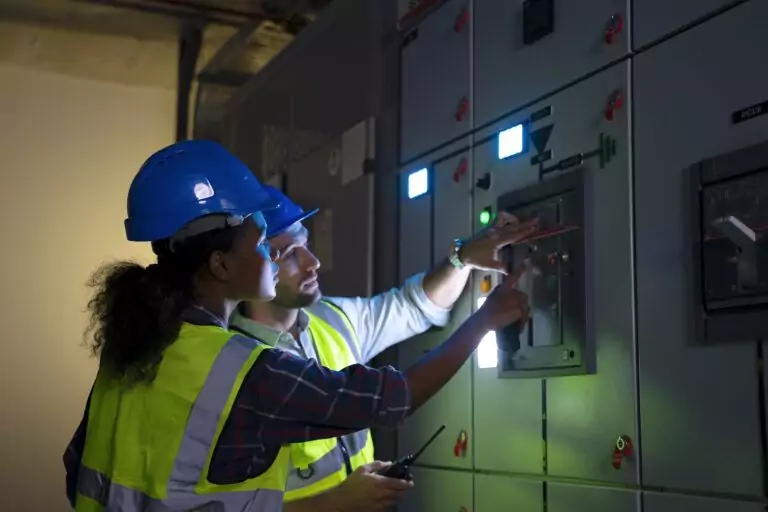Electrical engineering is a field that thrives on innovation and technological advancement. However, with rapid progress comes challenges. From mastering new software tools, such as computer-aided design (CAD) and simulation software, to adapting to advancements in the Internet of Things (IoT) and Artificial Intelligence (AI), the professional landscape is constantly evolving.
This article explores the challenges that electrical engineers encounter, including managing complex projects, ensuring safety and compliance, navigating budget constraints, and addressing environmental sustainability concerns. Additionally, it highlights the importance of bridging the skill gap and effectively navigating client expectations. Each section provides insights into overcoming these obstacles, emphasising the importance of continuous learning, effective communication, and strategic planning.
Join us as we explore the multifaceted world of electrical engineering and the strategies professionals employ to excel in their roles amidst ever-changing technological landscapes. If you’re exploring new opportunities in this dynamic field, take a look at our current electrical engineering job openings at Vista Projects.
Keeping up with Rapidly Evolving Technology
Keeping up with rapidly evolving technology is a critical endeavour for professionals and businesses that aim to remain competitive and innovative in a fast-paced digital world. This constant evolution presents opportunities and challenges, requiring a proactive approach to learning and adaptation. The most important goal in this context is to stay informed about the latest developments, understand their implications, and effectively integrate new technologies into existing practices.
To achieve this goal, individuals and organisations must cultivate a culture of continuous learning and curiosity. This process involves regularly engaging with educational resources, attending industry conferences, participating in online forums, and subscribing to relevant publications. Networking with other professionals in the field also plays a crucial role, as it allows for the exchange of ideas and experiences, fostering a collaborative environment where knowledge is shared.
Learning New Software Tools
In the realm of technological advancement, mastering new software tools such as CAD and simulation software emerges as a critical endeavour for professionals keen on enhancing their expertise and operational efficiency. The foremost goal is to acquire proficiency in these sophisticated tools, aiming to elevate design accuracy, diminish time-to-market, and spur innovation within product development processes. Pursuing continuous learning avenues, ranging from online courses and workshops to engaging in practical, hands-on projects, broadens one’s skill set.
Adapting to Advancements in Areas like IoT and AI
Adapting to advancements in fields such as the Internet of Things (IoT) and Artificial Intelligence (AI) is crucial for businesses and professionals aiming to secure a competitive edge by streamlining operations, enhancing decision-making processes, and forging innovative solutions. To navigate this landscape, a dedicated approach towards ongoing education and the practical application of IoT and AI is indispensable.
Organisations should focus on integrating these technologies into their operational frameworks, experimenting with their potential through pilot projects, and staying informed about the latest trends and best practices. Such proactive measures pave the way for unlocking new opportunities, boosting efficiency, and driving transformative outcomes.
Managing Complex Projects
Managing complex projects necessitates a multifaceted approach, focusing on coordination among multidisciplinary teams and adherence to tight deadlines. The objective is to ensure that all components of a project, from initial design to final implementation, are aligned with the overarching goals and timelines. Success in this area demands effective communication, rigorous planning, and the ability to adapt to unforeseen challenges.
This strategic approach enables organisations to deliver high-quality outcomes despite the complexities inherent in modern engineering projects.
Coordinating with Multidisciplinary Teams
Effective coordination among multidisciplinary teams is pivotal in managing complex projects. The primary goal is to foster synergy between diverse experts, such as software developers and mechanical engineers. By establishing clear communication channels and shared objectives, teams can overcome interdisciplinary barriers and ensure that all project aspects align with the intended design and functionality.
Meeting Tight Deadlines
Meeting tight deadlines involves meticulous planning and resource optimisation to achieve project milestones without compromising quality. Prioritising tasks based on their impact and urgency enables teams to focus on critical areas, while agile project management techniques allow for flexibility in responding to challenges.
By adhering to these principles, organisations can achieve their goals within aggressive timeframes, maintaining a competitive edge in the market.
Ensuring Safety and Compliance
Ensuring safety and compliance in electrical engineering projects is paramount, focusing on adhering to international standards such as IEEE and IEC. The goal is to implement safety protocols, especially in high-voltage system designs, to protect both users and the environment. This requires a thorough understanding of regulatory requirements and a commitment to incorporating safety measures throughout the design and development process.
Adhering to International Standards
Adhering to international standards like IEEE and IEC is crucial for ensuring the safety, reliability, and efficiency of electrical engineering projects. The primary goal is to align with these standards to guarantee that electrical systems meet global quality and safety benchmarks. This adherence not only facilitates regulatory compliance but also enhances the project’s credibility and market acceptance.
Engineers must stay updated with these standards to incorporate the latest safety practices and technological advancements into their designs, ensuring projects are both innovative and secure.
Implementing Safety Protocols in High-Voltage System Designs
Implementing safety protocols in high-voltage system designs is essential to protect users and maintenance personnel from hazards. The objective is to integrate comprehensive safety measures that address the unique challenges posed by high-voltage environments. This includes the installation of protective devices, the establishment of clear safety guidelines, and the regular inspection and testing of equipment.
By prioritising these safety protocols, engineers can minimise the risk of accidents, thereby ensuring a safer working environment and extending the system’s longevity.
Handling Budget Constraints
Handling budget constraints is a critical aspect of electrical engineering projects. The primary goal is to optimise resource allocation to ensure project feasibility while maintaining innovation and safety standards. This requires a strategic approach to cost management, including thorough market research for cost-effective materials and technologies, focusing on balancing cost and quality.
Balancing Cost and Quality in Component Selection
Balancing cost and quality in component selection is pivotal for managing budget constraints effectively. The main goal is to identify components that offer the best value, high performance at a reasonable cost. This involves conducting comprehensive market research to compare options and leveraging bulk purchasing or long-term supplier agreements to reduce costs.
By prioritising components that meet essential quality standards while staying within budget limits, engineers can ensure the project’s durability and reliability while maintaining financial discipline.
Securing Funding for R&D in Emerging Technologies
Securing funding for R&D in emerging technologies is crucial for innovation and staying ahead in competitive markets. The objective is to explore various funding avenues, including government grants, industry partnerships, and venture capital. Crafting compelling proposals that highlight the potential market impact and technological advancements can attract investment.
This funding enables organisations to pursue research in cutting-edge fields, such as IoT, AI, and renewable energy, driving progress and fostering the development of groundbreaking solutions.
Dealing with Environmental and Sustainability Concerns
Dealing with environmental and sustainability concerns is increasingly becoming a priority in electrical engineering projects. By prioritising environmental and sustainability concerns, engineers can support ecological balance and promote long-term sustainability, aligning technological progress with environmental stewardship.
Designing Energy-Efficient Systems
Designing energy-efficient systems is essential to reducing the carbon footprint of electrical engineering projects. This process involves innovative design approaches that enhance efficiency, such as the use of advanced materials and technologies that require less energy to operate.
By focusing on energy efficiency, engineers can create solutions that meet current needs and contribute to a sustainable future.
Incorporating Renewable Energy Sources
Incorporating renewable energy sources into power systems is a key strategy for promoting sustainability. Integrating clean energy sources like solar, wind, and hydropower into existing power grids and standalone systems not only helps reduce dependency on fossil fuels, it also supports global efforts towards achieving a lower carbon economy.
Engineers play a crucial role in this transition by designing systems that can efficiently harness, store, and distribute renewable energy, paving the way for a greener and more sustainable energy landscape.
Bridging the Skill Gap
Bridging the skill gap in the field of electrical engineering is vital for addressing the evolving demands of technology and industry. By investing in skill development, organisations can ensure their workforce is capable of driving innovation and maintaining competitiveness in a rapidly changing technological landscape.
Training in Specialized Areas
Training in specialised areas, such as power systems analysis, deepens electrical engineers’ understanding of complex power systems, enabling them to design, analyse, and optimise these systems more effectively. This specialised training can involve advanced courses, workshops, and hands-on projects that focus on the latest methodologies and tools in power systems engineering.
By enhancing their expertise in this area, engineers can contribute to more efficient, reliable, and sustainable power systems.
Keeping Abreast of Regulatory Changes and New Materials Technology
Keeping abreast of regulatory changes and new materials technology is essential for electrical engineers to remain competitive and compliant with relevant standards. The objective is to stay informed about the latest developments in regulations affecting the electrical engineering field and advancements in materials technology that can lead to more innovative and sustainable designs. Regularly attending industry seminars, subscribing to professional journals, and participating in continuing education courses are effective ways to ensure engineers are up-to-date with these critical changes.
Continuous learning enables electrical engineers to adapt quickly to regulatory shifts and leverage new materials to enhance project outcomes.
Navigating Client Expectations
Navigating client expectations is a critical component of electrical engineering projects, focusing on managing project scope to prevent feature creep and communicating technical limitations to non-technical stakeholders. The main goal is to align project deliverables with client needs while maintaining realistic timelines and budgets. This process requires transparent communication, setting clear milestones, and managing changes effectively.
By understanding client needs and maintaining open lines of communication, engineers can ensure project success, meet client satisfaction, and foster long-term relationships.
Managing Project Scope to Prevent Feature Creep
Managing project scope effectively is essential to prevent feature creep, ensuring that projects remain on track and within budget. The key practice is to clearly define project boundaries and deliverables from the outset. This involves detailed planning, setting realistic expectations, and agreeing on specific goals with all stakeholders.
Regular reviews and adjustments to the project plan help mitigate the risk of scope creep, ensuring that any additions or changes are fully evaluated for their impact on resources and timelines.
Communicating Technical Limitations to Non-Technical Stakeholders
Communicating technical limitations to non-technical stakeholders is crucial for maintaining realistic expectations and project integrity. The objective is to translate complex engineering concepts into understandable terms, highlighting how these limitations may affect project outcomes. This requires open, honest communication and the ability to present technical challenges in a way that emphasises collaborative problem-solving.
By fostering an environment of transparency and understanding, engineers can navigate potential issues more effectively, ensuring stakeholder alignment and project success.
The Future of Electrical Engineering: Adapting and Innovating
Electrical engineering continues to evolve rapidly, bringing both immense opportunities and significant challenges. From staying ahead with new technologies like IoT and AI to managing complex projects while ensuring safety and compliance, the role demands continuous learning and adaptability. Engineers must balance innovation with practicality, manage budgets efficiently, and meet client expectations, all while driving sustainability in every project.
At Vista Projects, we specialise in providing innovative solutions to complex engineering challenges, ensuring that each project we undertake is delivered with the highest standards of safety, efficiency, and sustainability. Our team’s expertise in electrical engineering and system integration allows us to tackle the most demanding projects with precision and creativity.
Ready to tackle your next electrical engineering challenge? Contact Vista Projects today, and let’s bring your vision to life with cutting-edge, sustainable solutions.









